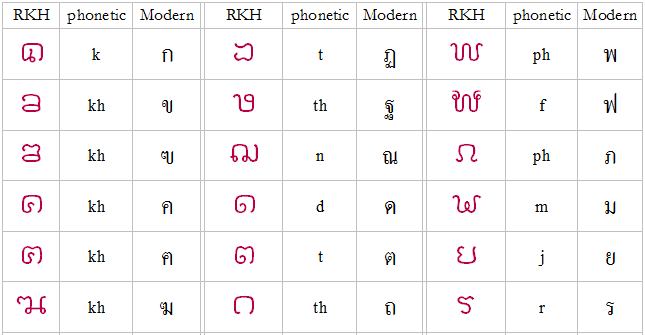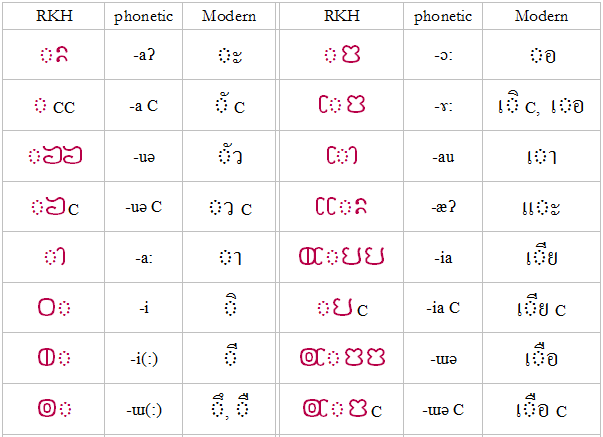According to common history, this writing system was developed by King Ramkhamhaeng for the Thai language in 1283 AD, and is regarded as the very first stage of the standard written language. At that time, the kingdom’s capital was established in the city of Sukhothai. The Sukhothai period of Siam/Thailand was one of the classical periods whose artifacts are much admired today. It is a pity perhaps that in Sukhothai province today, this attractive script does not adorn more public buildings. The font used in these charts was created by Ian James.
Consonants
The consonants are presented in the modern order. Many are familiar and retain almost the exact same form today; others have changed considerably.
Note: absent are equivalents for these modern letters:
See also the Spelling Notes below.
Vowels & Other Marks
Note: C stands for a syllabic-final consonant.
Numerals
Sample text
This is the beginning of the inscription on the Ramkhamhaeng Stele:“My father’s name is Sri Inthrathit, my mother’s name is Nang Seuang,
my older brother’s name is Ban Meuang. / Myself, my brothers & sisters from the same womb are five,
three boys, two girls. Older brother Pheua, / the eldest son, passed away;
Pheua was prepared but still small. When I grew up to the age of /
nineteen ... ”
Spelling Notes
Generally, and especially where there may be ambiguities, a syllable’s vowel letter(s) will stick close to the syllable’s initial consonant, and there will appear to be a slight space before any syllabic-final consonant. The clustering of a syllable’s initial consonant with /r/ and /l/ will also be written closely, as will the tone-changing letter /h/ before its consonant.
Some words are spelt differently from the modern form, which is to be expected. The older
spelling may reflect different pronunciations, or just different spelling systems. In particular,
long and short vowels seem to be less differentiated; some modern vowels (or spellings) seem to be
absent altogether.
Initial /i:/ can stand alone without initial glottal consonant, as long as a space follows.







